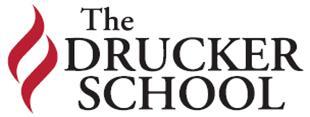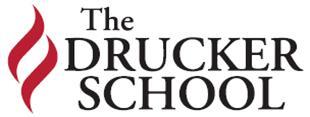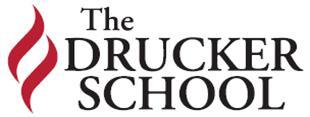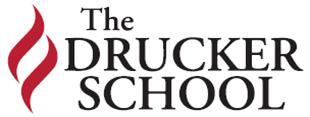Identifying, recruiting and retaining top talent

Course Syllabus Page 1
Marketing Strategy and Planning
Management 352 (4 units)
Professor Bernard Jaworski
Peter F. Drucker Chair
Phone: (909) 607-3647
Email: [email protected]
Office hours: by appointment, always available by email
Faculty support: Bernadette Lambeth,
Burkle Upper Level East End
Phone: 909-607-7008,
Course Schedule
Semester: Spring
Meeting day, time: Monday, 4:00pm-7:00pm
Course Location: TBA
Course Description
This course is designed to be a capstone marketing course and is positioned as one of the essential
marketing courses to take as part of the marketing concentration. The course will enable students to
bring together much of what has been taught in marketing and during the MBA in general. The final
output will be the production of a marketing plan for a client organization.
Prerequisites — Classes or Knowledge Required for this Course
You must have completed MGT 321/514 in order to take this course (no exceptions).
Class Meeting Times
We will meet Mondays from 7-10pm, beginning January 28th (after MLK Day). Final presentations at
May 5th and May 12th.
Required Text:
One book is required for this course:
1. Heibing, R.G. and Cooper, S.W. (2004). The one-day marketing plan: Organizing and
completing a plan that works. NY: McGraw Hill. ISBN 978-0-07-139522-9
Required Cases:
1. Propecia (HBS 9-505-035) 2. Global Wine War 2009 (HBS 9-910-405) 3. Hilti France: Strategy Implementation (A). IMD-3-0859 4. Burberry (HBS 9-504-048) 5. Damien Hirst and the Contemporary Art Market (ESMT-310-0105 (July 27, 2009))

Course Syllabus Page 2
6. Kone (HBS 9-501-070) 7. Bharti IMD-3-1115 8. Aqualisa Quartz (HBS 9-502-030) 9. Cialis (HBS 9-505-038)
Course Requirements & Assignments:
Participation in class:
Individual (e.g., be attentive during group presentations, ask questions and do not use the time to catch up on emails or Facebook etc).
Final Case (Take home)
Individual (Due week 14)
Group (due Week 15, or before)
Final Presentation
Group (Week 15, or before)
The marketing plan:
Your major assignment requires the construction of a marketing plan.
Who do you write a marketing plan for?
Here you have three options: Option 1: Locate a client on your own. Option 2: Build a marketing plan
for a new to the world business. Option 3: Work with Professor Jaworski to secure a client.
Do I work on the marketing plan by myself or in a group?
You are required to work in a group comprising 3-5 members (this depends on the final number of
projects). Before forming a group ask: Am I sure I can work with this person? Will we be able to meet
near where I live or work during the semester? Can we work around other commitments without
jeopardizing the quality of the finished product?
How do I construct a marketing plan?
The purpose of this course is to teach you how to write a marketing plan. We will break the plan down
into a number of stages – I teach a stage, you apply this stage of the marketing plan to your project and
then give a presentation to the class, I teach the next stage, etc.
Peer evaluation:
I do not tolerate free loaders and will invoke peer evaluation, which may result in a grade reduction, for
any group within which a student is not pulling his/her weight.
Marketing plan
Overall, I will be evaluating your ability to manage the client and work together as a group. The list
below represents my overall assessment of this process. In addition, I have included a grading rubric
that I will use when grading the marketing plans.

Course Syllabus Page 3
How well you managed the client relationship – kept the client informed, asked questions,
involved the client, made the client feel confident you were in control of the project.
How much initiative your group demonstrated.
How well you seemed to work together as a team.
How well you grasped the problems you were asked to address as part of your project.
How thoroughly you analyzed data and information.
The quality of your ideas and solutions – the strategic depth you demonstrated in making
recommendations, the innovativeness of your ideas, the appropriateness of your recommendations.
The quality of your marketing plan – the cohesiveness of the document, the quality (see above
of your ideas and solutions), the overall presentation of the report, etc.
The quality of the oral presentation.

Course Syllabus Page 4
Marketing Strategy: Marketing Plan Grading Rubric
The student's writing demonstrates a comprehensive grasp of the main issues facing the organization. The student's writing shows an impressive in-depth analysis of each stage of the marketing plan. The marketing plan is well organized, moving through analysis, to choices/recommendations to implementation. The student makes appropriate use of theoretical frameworks and concepts to organize and advance the analysis of key issues central to the marketing plan and ultimately, frame recommendations.
The student's writing demonstrates a grasp of the main issues facing the organization. The student's work shows some analysis of the patterns, themes and main ideas for each stage of the marketing plan. The marketing plan is well organized, moving through analysis, to choices/recommendations to implementation. The student demonstrates linkages between theoretical frameworks and concepts to advance the development of the marketing plan.
The student's work is broad and focuses on insignificant details. The marketing plan presents forgone conclusions/recommendations before developing a strong argument thorough earlier analysis. The student covers the main components of the marketing plan and includes some ideas relevant to the central issues, but does not really analyze them in any way. The student identifies theoretical frameworks but makes no real attempt to use these in order to develop the marketing plan.
The student's writing indicates almost no grasp of the issues facing the organization and shows almost no evidence of reflective thinking. The student's writing shows a simple retelling of the key issues, which may include gaps and misunderstandings. If recommendations are present, these bear little resemblance to earlier analysis. The student shows only a literal understanding of the patterns, themes and main ideas required to develop the marketing plan and misrepresents significant important issues. The student does not reference theoretical frameworks and concepts.

Course Syllabus Page 5
Marketing Strategy: Writing Style
The student's writing demonstrates a keen awareness of the audience and purpose. The student establishes a controlling impression that conveys a clear and distinctive perspective on the subject and maintains a consistent tone and focus throughout the piece of writing. The writing forms a meaningful whole, moving smoothly and clearly and with sophistication from the opening ideas to the closing thoughts. The student makes precise use of language to convey ideas. The student demonstrates proper understanding of English usage and control of grammar, paragraph and sentence structure. The student's work shows accurate spelling and correct use of grammar
The student's writing is coherent and focused and demonstrates a clear perspective and awareness of the audience and purpose. The writing includes a clear beginning, middle and end and maintains a consistent tone and focus throughout the piece of writing, which forms a whole, moving clearly from the opening ideas to the closing thoughts. The student uses appropriate language to convey thoughts. The student demonstrates proper understanding of English usage and control of grammar, paragraph and sentence structure. The student's work contains some spelling and grammatical errors.
The student's writing is somewhat focused but, at times, contains an unclear perspective and lapses in logic. The writing demonstrates some awareness of the audience and purpose. The controlling idea of the student's work is unclear or the writing does not maintain a consistent focus of the controlling idea. The work may not form a complete whole from the beginning to the end. The student may use imprecise language or language that causes some confusion to the reader. The student demonstrates an understanding of English usage and control of grammar, paragraph and sentence structure. The student's work contains some spelling and grammatical errors and these distract the reader.
The student's writing is very unfocused and does not establish a controlling idea. The writing lacks logic and perspective altogether and essentially confuses the reader. The student demonstrates a misunderstanding of English usage and control of grammar, paragraph and sentence structure. The student's work contains substantial spelling and grammatical errors, which cause the reader to have almost no understanding of the ideas conveyed by the writer.

Course Syllabus Page 6
Class Participation: Name: _
What this means for class participation
One Only
A and A-
Comes to class prepared. Contributes readily to the conversation but does not dominate it. Makes thoughtful contributions that advance the conversation. Shows interest in and respect for others' points of view. Participates actively in small groups. Makes a genuine effort to assist colleague presenters by being engaged and involved in presentations.
Comes to class prepared and makes thoughtful comments when called upon. Contributes occasionally without prompting. Shows interest in and respect for others' points of views. Participates actively in small groups.
B- and C+ Participates in discussion but in a problematic way. Such students
may talk too much, make rambling or tangential contributions, bluff there way unprepared or otherwise dominate discussions, not acknowledging cues of annoyance from other students or the professor.
Comes to class prepared but does not voluntarily contribute to discussions and gives only minimal answers when called upon. However, does show interest in the discussion, listens attentively and takes notes.
Seems on the margin in class and may have a negative impact on the participation of others. Often does not participate because has not read the material in advance. May be disruptive or radiate negative energy via hostile or bored body language. May be overtly rude.

Course Syllabus Page 7
Attendance
Students are encouraged to attend all classes. As a matter of courtesy, if you are unable to attend
class, you must email the Professor before class. If you miss more than one class in a 7-week course
or two classes in a 14-week course, you will be marked as absent for the entire course (no exceptions)
and will need to retake the course.
Scientific and Professional Ethics
The work you do in this course must be your own. Feel free to build on, react to, criticize, and analyze
the ideas of others but, when you do, make it known by referencing your sources. You must explicitly
acknowledge when your work builds on someone else's ideas, including ideas of classmates,
professors, and authors you read. If you ever have questions about drawing the line between others'
work and your own, ask the course professor who will give you guidance.
While we encourage students to form study groups, any piece of individual assessment must be
completed independently. Recycling assignments submitted by students in your class, students in other
classes, or students who have previously taken the class or recycling assignments you find in external
sources such as the Internet will not be tolerated and will automatically receive a grade of zero. You will
also face possible expulsion from the program.
Students with Disabilities
Claremont Graduate University is committed to offering auxiliary aids and services to students with
verifiable disabilities, in compliance with section 504 of the Rehabilitation Act of 1973 and Title II of the
Americans with Disabilities Act of 1990. To ensure that individual needs are addressed, students with
disabilities are encouraged to contact the Dean of Students.
Prior to First Class
Read and prepare the Propecia case study (questions below).
Late Assignments and Exceptions
No late assignments will be accepted.

Course Syllabus Page 8
Preparation for Each Class
Class Overview
January 27th
Week 1: Doctrine, Market Planning, and Role of Marketing
Part I: Lecture and Discussion (No Prepare for Student)
1. Discipline of Growth: "Doctrine" for Market Planning 2. Overview of Marketing Planning Process 3. Role of Marketing in Large Firms
Part II: Case – Propecia (Student preparation) 1. Who is the target segment? Please describe the segment. 2. What is the value proposition to this segment? 3. Who are the key competitors? 4. What should be the go to market strategy? 5. Is advertising the right choice? 6. What do you think of the $60M sales goal?
Background Reading (Student preparation)
Chapters 1 and 2
February 3rd
Week 2: Market Definition, Goals and Aspirations
Part I: Lecture and Discussion (No Preparation for Student)
1. Boundaries of Markets: The Marketing Atlas 2. Scope and Boundary of Competition 3. The Basics of Market Sizing 4. Goals and Aspirations Part II: Case: Global Wine War 2009 (Student Preparation) 1. How were the French able to dominate the worldwide wine trade for centuries? 2. In the face of this two-century history of dominance in the world wine trade, how were the
New World producers able to expand their market share so rapidly?
3. How should the Australians/Americans/French respond to their situation? What proposals
would you make and what action would you take in each country?
Background Reading (Student preparation)
No book chapters assigned this week.
Choice of Firm for Market Plan (Student preparation)
Course Syllabus Page 9
1. Identify your firm by February 3rd. 2. Email me:
a. What is the history of the firm? b. What products and services do they produce? c. Who are their key competitors? d. What specific issue will be addressed in the marketing plan?
February 10th
Week 3: Customer Insights, Narratives, and Unmet needs
Part I: Lecture and Discussion (No preparation for student)
1. What is a customer insight? 2. Where in the buying process do firms "lose" customers? 3. How do I uncover "unmet needs?" 4. How do I "describe" my customer (what is my customer narrative)?
Part II: Team-Breakouts (Jaworski advises team)
1. What is our target customer? 2. Where are we losing the target customer in the buying process? 3. Do they have underserved or unmet needs? 4. How would we describe the target customer?
Background Reading (Student Preparation)
February 17th
Week 4: Competition, Capabilities, and Segment Choice
Part i: Lecture and Discussion (No student preparation)
1. Who is my competition? 2. What unique capabilities do I possess? 3. What markets do I target?
Part II: Case: Hilti France: Strategy Implementation (A) (Student Preparation)
1. How should Alain Baumann prioritize his customer segments? 2. Should Hilti France enter La Plateforme du Batiment? 3. If so, what should be the terms of the deal?
February 24th
Week 5: Positioning I
Part I: Lecture and Discussion (No student Preparation)
1. The basic approach to positioning. 2. Value propositions business-to-business markets.
Course Syllabus Page 10
3. How do you assess a position?
Part II: Team-Breakouts (Jaworski advises team) 1. Which segment(s) did you select? Why? 2. How are you going to position your offering in the marketplace? 3. What specific customer behavior are you attempting to change? 4. Why will you win?
Background readings (Student Preparation)
March 3rd
Week 6: Positioning II: The Customer Experience
Part I: Lecture and Discussion (No student preparation)
1. Mapping the Customer Experience 2. Looking for Pain Points
Part II: Case: Burberry (Student Preparation) 1.
Compare Burberry's overall market position to that of its competitors including Polo, Coach, Armani, and Gucci. Is Burberry's position sustainable over the long term? Why? Why not?
Bravo's team is juggling a lot of things including multiple brands (Prorsum, London, Blue and Black, Thomas Burberry), multiple collections (womenswear, menswear, accessories), and multiple channels (wholesale, retail – including flagship and company owned stores), and multiple licensees. What is the role of each of these elements in the overall business model? What is the role of sub-brands?
What about the stores? What is the role of licensing?
How did the team manage to elevate the overall status of the Burberry brand?
Describe their target market. Who is the target customer?
What is a "good customer experience with the brand?
March 10th
Week 7: Innovation Beyond the Product: Breaking commodity trap
Part I: Lecture and Discussion (No student preparation)
1. Ten sources of innovation 2. Breaking the Commodity Trap
Part II: Case: Damien Hirst (Student Preparation)
1. What is the conventional distribution channel for high-end, contemporary art? 2. How did Hirst modify the channels?
Course Syllabus Page 11
3. How does a typical contemporary artist establish his or her "brand?" How did Hirst go about
establishing his brand?
4. How does Hirst use partnerships and relationships to establish himself in the art world? 5. What art critics play – or not play – in the evolution of his career? 6. What differentiates Hirst from other artists? 7. Can the Hirst model be sustained – or would art buyers return to more traditional artistic
8. Finally, what does the Hirst case tell us about "innovation" in organizations?
Part III: Team Breakouts (Jaworski advises teams)
1. What is the product's position in the marketplace? 2. What should it's position be? 3. Is the position sustainable? Defendable?
Spring Break Week (March 17th)
March 24th
Week 8 Marketing Communications plan
Part I: Lecture and Discussion (No student preparation)
1. Building market communications plans
Part II: Team Breakouts (Jaworski advises)
Background readings (Student Preparation)
Chapter 8-16 (Skim)
March 31st
Week 9 Pricing Strategy
Part I: Lecture and Discussion (No student preparation)
1. Shifting from cost plus to value based
Part II Case: Kone (Student preparation questions) 1. Do you think the MonoSpace launch will be successful in Germany? 2. What is the size of the market opportunity? 3. How would you segment the low-rise, German market? 4. The key players in the decision-making unit are the owner, architect, structural engineer,
and building contractors – how are their customer portraits similar? Different?
5. How would you position the product? 6. How would you develop your marketing mix plan – what pricing? What market
communication? What selling proposition?
Course Syllabus Page 12
April 7th
Week 10 Profit Models and Marketing Math
Part I: Lecture and Discussion (No student preparation)
1. Profit Models 2. The Basic P&L for Marketing Plan 3. Key Marketing Math Revisited
Part II: Team Breakouts (Jaworski advises teams)
1. Be prepared to discus your marketing mix. 2. Be prepared to discuss your basic P&L (very general terms).
Background readings (Student preparation)
April 14th
Week 11 Partnerships, Alliances and Capabilities
Part I: Lecture and Discussion (No student preparation)
1. The 9 Question Framework 2. Types of Alliances 3. Relationship to Marketing plan
Part II: Case:Bharti: Flying on the Wings of Others (Student Preparation) For Bharti, consider the perspective of both parties involved: First Bharti & then BT. 1. As Bharti, what are the pros and cons of deciding that you are going to grow in India by using alliances
with foreign companies "flying on the wings of others?" If Bharti resorts to this alliance strategy, what skills and competencies will the company need?
2. If you were in BT, proposing to enter a joint venture in India as a minority partner – what would be your
biggest concerns? (with any firm –not necessarily Bharti). What would you do to reduce your concerns?
April 21st
Week 12 Branding
Part I: Lecture and Discussion (No student preparation)
1. The Nature of Strong Brands 2. How to Audit a Brand
Part II: Aqualisa Quartz: Simply a Better Shower (Student Preparation)
Course Syllabus Page 13
1. What is the Quartz value proposition to plumbers? To consumers? 2. Why is the Quartz shower not selling? 3. Aqualisa spent three years and £5.8 million developing the Quartz. Was the product worth
the investment? Is Quartz a niche product or a mainstream product?
4. Aqualisa currently has three brands: Aqualisa, Gainsborough and ShowerMax. What is the
rationale behind the multiple brand strategy? Does it make sense?
5. What should Rawlinson do to generate sales momentum for the Quartz product? Should he
change his marketing strategy to target consumers directly, target the DIY market, or target developers? Should he lower the price of the Quartz? Or should he do something different altogether? Please justify your recommendations using logic, data and analyses.
April 28th
Week 13: Balanced Scorecards and Marketing Audits
Part I: Lecture and Discussion (No student Preparation)
1. Balanced Scorecard 2. Marketing Audits 3. Key Marketing Metrics (e.g., NPS)
Part II: Student Breakouts (Jaworski advises teams)
1. Come to class with your market planning "final" questions for Professor Jaworski
Part III: Final Exam Hand-Out (Cialis)
Professor Jaworski provides details with hand-out distributed April 28th.
Background readings (Student preparation)
May 5th
Week 14 Student Presentations
May 12th
Week 15 Student Presentations
Source: http://www.cgu.edu/PDFFiles/Drucker/MGT%20352%20SyllabusSpring2014-v3%200.pdf
Technical and pictorial file Table of content Executive summary Background information Major areas of intervention Vision and mission Geografical location Modernisation of the centre Health care facilities Occupational therapy and income generating facilities Support facilities Preparation of traditional medicine Function of the centre
with cs 04HQ3972 5/09 Blue Cross and Blue Shield of Louisiana incorporated as Louisiana Health Service & Indemnity Company A SMART STEP TO BETTER HEALTH Make generics your first step to better health. Generics are "copycats" of brand-name drugs and offer a better value. They're safe and effective and cost less than brand-name drugs. And most importantly — they're approved by the U.S. Food and Drug Administration (FDA).







